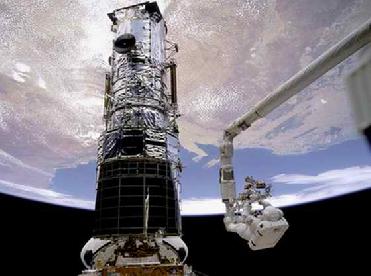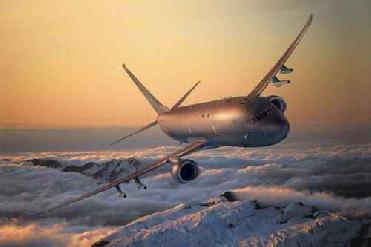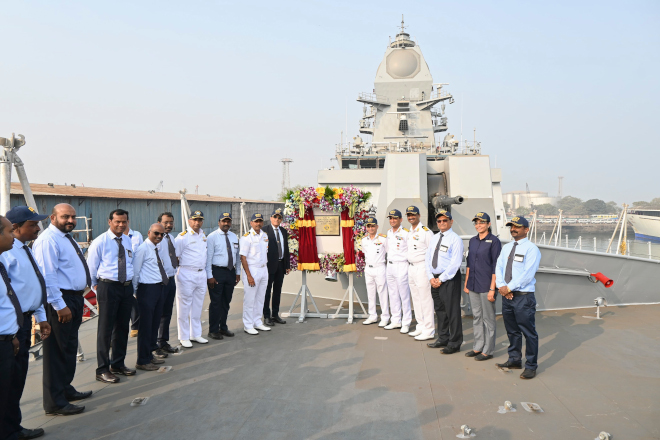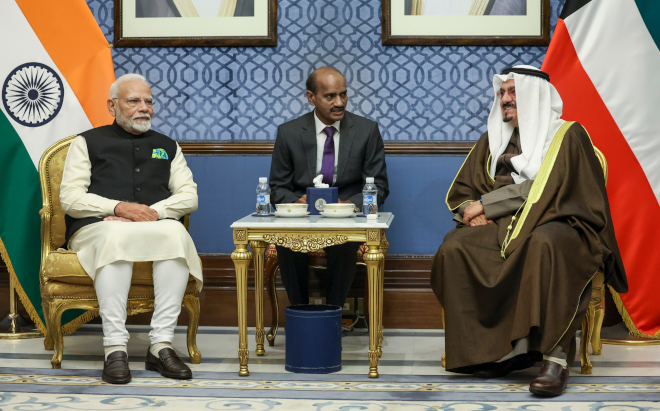
Astronaut F. Story Musgrave is anchored on the space shuttle Endeavor's robotic arm during the first service mission to the Hubble Space Telescope in 1993. NASA photo
WASHINGTON, DC (BNS): In the International Year of Astronomy, the Hubble Space telescope is preparing for its final chapter, starting with the scheduled May 12 launch of the space shuttle Atlantis for NASA's fifth and final service mission of the telescope.
Julianne Dalcanton, a University of Washington associate professor of astronomy, said that the repairs will provide Hubble with a future as bright, though perhaps not nearly as long, as its past. Dalcanton has used the telescope for nearly a decade in her research work.
In an article appearing in the January 1 edition of Nature, the University of Washington assistant professor has recounted Hubble telescope’s many contributions to astronomy, most of which could not have been achieved by ground-based telescopes.
She has attributed the Hubble's success to the fact that it orbits nearly 350 miles above the Earth, far removed from the atmosphere and ambient light that limit the effectiveness of ground-based telescopes, and says the upcoming service mission may allow Hubble to add to its already rich legacy of scientific discovery.
That legacy includes helping to revolutionise astronomers' understanding of phenomena called black holes and their role in forming galaxies; more detailed observations of pulsating stars called Cepheids that enhanced the ability to judge the huge distances involved in stellar astronomy; and, most recently, producing an image, the first direct evidence, of a planet orbiting a star outside the solar system, the university professor said.
“One of the things Hubble has done is enhancing the precision with which we can carry out research. And the images produced have really spurred public interest. Those pictures are on screen savers throughout the world,” Dalcanton said.
Speaking about the biggest successes, Dalcanton said it is the democratisation of Hubble's data. Astronomers place requests for the telescope to make specific observations, and if their project is accepted the data is returned to them to continue their work. But after a year, the data becomes available for anyone to use for any type of study, she said.
“You don't have to be at Harvard or CalTech. You can be at a small Midwestern liberal arts teaching college and still have the opportunity to work with Hubble data,” the University of Washington assistant professor said.
On Hubble’s greatest contribution, Dalcanton said that it was difficult to pinpoint one from among the telescope's many accomplishments. The forthcoming service mission, among other things, will replace gyroscopes and heat shields, upgrade instruments and add ‘some spiffy new capabilities that will allow us to make much deeper observations.’
The University of Washington assistant professor is happy that she and other scientists will have at least another five years to work with Hubble. In due course, the Hubble telescope will be replaced with the James Webb Space Telescope. The new telescope will focus more on the infrared part of the spectrum and won't produce the same type of images that Hubble has. “It's a great telescope and I'm happy to be part of it. Like any tool, the more you use it the more you are able to get the best out of it,” Dalcanton said.
The Hubble space telescope was launched on April 24, 1990, as a joint venture of NASA, the European Space Agency and the Space Telescope Science Institute. But the mission got off to a rocky start when it was discovered that an error had been made in fabricating the main mirror and its images were often fuzzy at best. The problem was corrected on NASA's first service mission in 1993 and the telescope has been wildly successful ever since, NASA officials said.
 Next Article
Next Article













The Indian Air Force, in its flight trials evaluation report submitted before the Defence Ministry l..
view articleAn insight into the Medium Multi-Role Combat Aircraft competition...
view articleSky enthusiasts can now spot the International Space Station (ISS) commanded by Indian-American astr..
view article